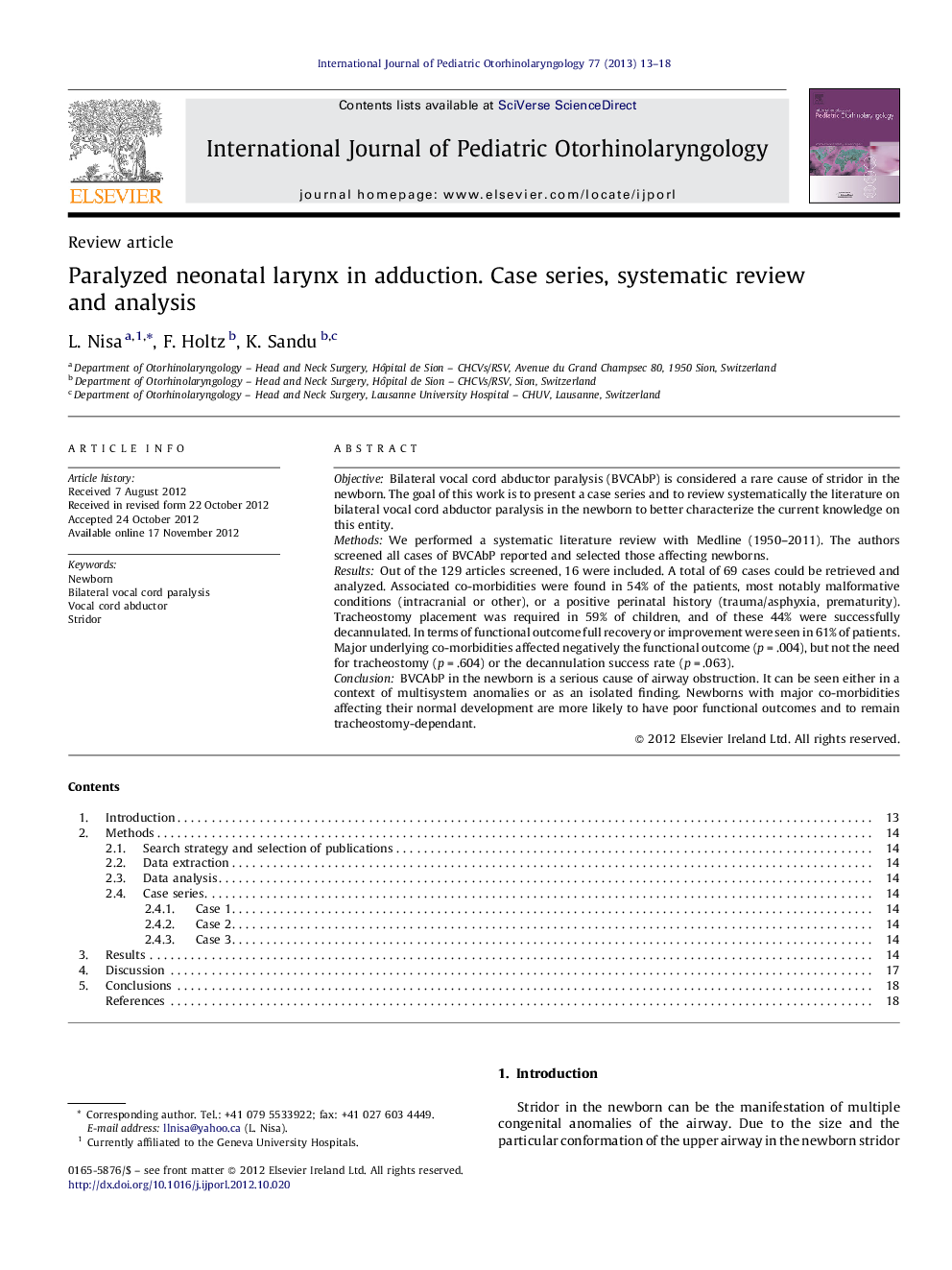| Article ID | Journal | Published Year | Pages | File Type |
|---|---|---|---|---|
| 6213984 | International Journal of Pediatric Otorhinolaryngology | 2013 | 6 Pages |
ObjectiveBilateral vocal cord abductor paralysis (BVCAbP) is considered a rare cause of stridor in the newborn. The goal of this work is to present a case series and to review systematically the literature on bilateral vocal cord abductor paralysis in the newborn to better characterize the current knowledge on this entity.MethodsWe performed a systematic literature review with Medline (1950-2011). The authors screened all cases of BVCAbP reported and selected those affecting newborns.ResultsOut of the 129 articles screened, 16 were included. A total of 69 cases could be retrieved and analyzed. Associated co-morbidities were found in 54% of the patients, most notably malformative conditions (intracranial or other), or a positive perinatal history (trauma/asphyxia, prematurity). Tracheostomy placement was required in 59% of children, and of these 44% were successfully decannulated. In terms of functional outcome full recovery or improvement were seen in 61% of patients. Major underlying co-morbidities affected negatively the functional outcome (p = .004), but not the need for tracheostomy (p = .604) or the decannulation success rate (p = .063).ConclusionBVCAbP in the newborn is a serious cause of airway obstruction. It can be seen either in a context of multisystem anomalies or as an isolated finding. Newborns with major co-morbidities affecting their normal development are more likely to have poor functional outcomes and to remain tracheostomy-dependant.
